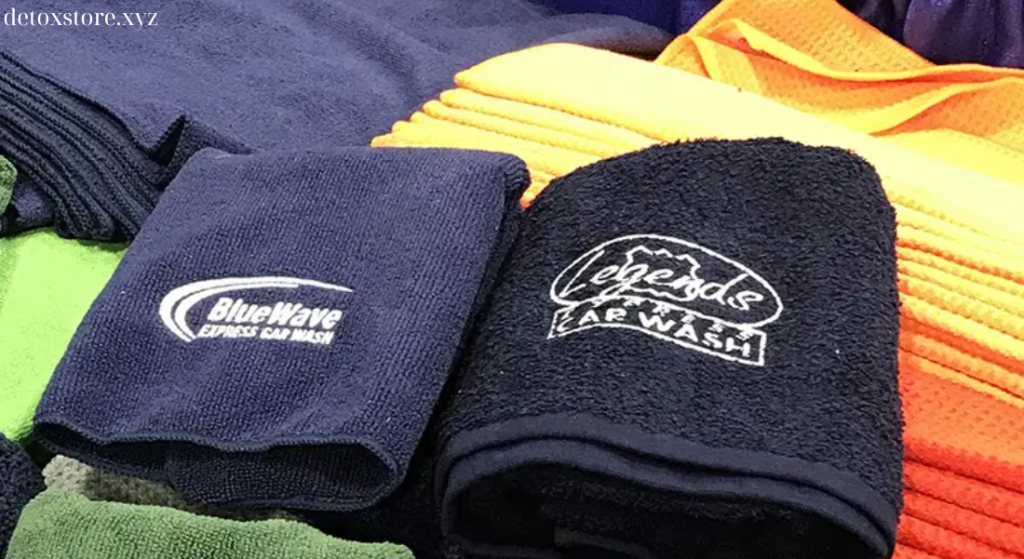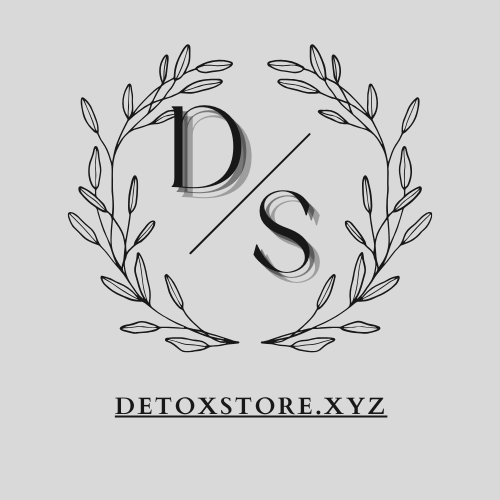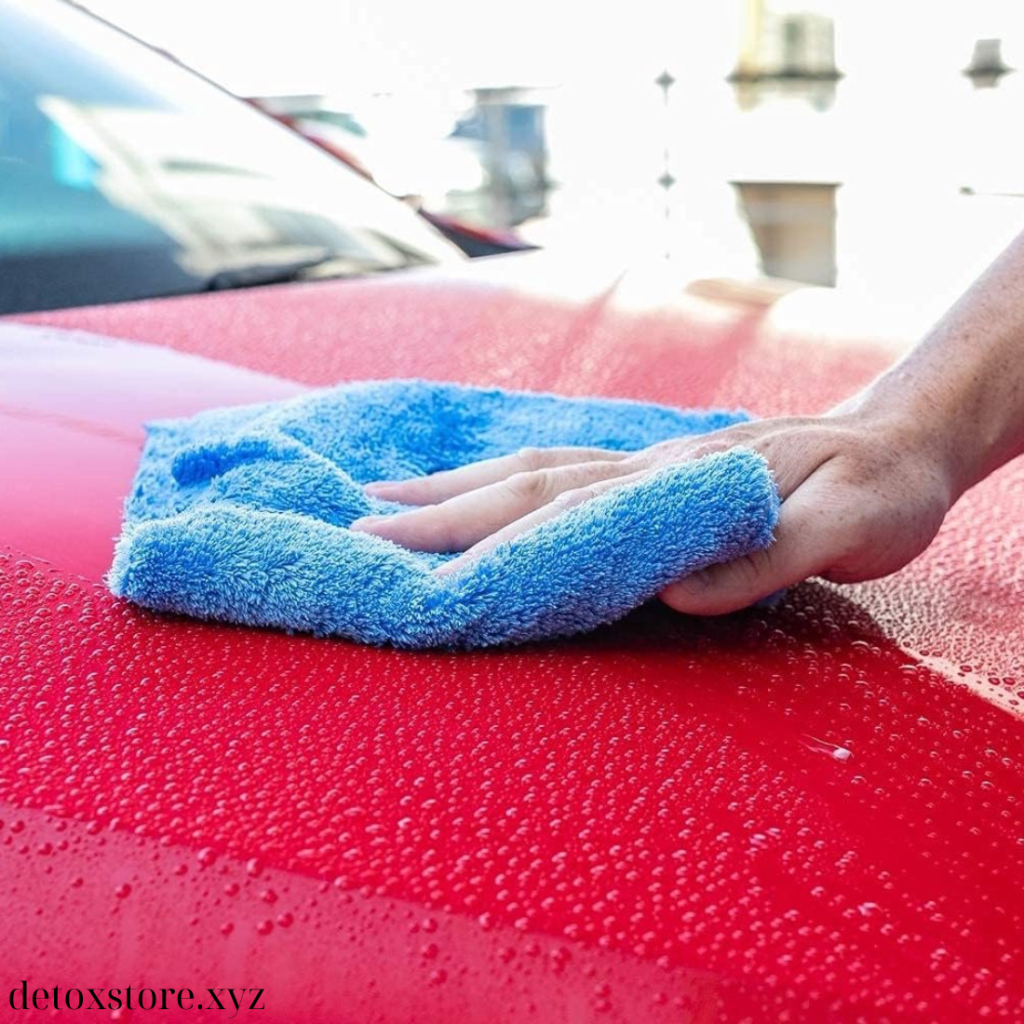Microfiber towels are a must-have for car enthusiasts and professional detailers alike, offering unparalleled cleaning power without scratching delicate surfaces. Unlike regular towels, microfiber towels have ultra-fine fibers that can pick up dust, dirt, and grime with ease, leaving surfaces clean and streak-free. Whether you’re washing, waxing, or polishing, choosing the right microfiber towel is essential for achieving a flawless finish without damage. This guide covers the benefits of microfiber towels, key features to look for, and tips for selecting the best towels for scratch-free detailing.
Table of Contents
ToggleKey Highlights
- Why Microfiber Towels Are Essential for Detailing: Designed for scratch-free, effective cleaning.
- Benefits of Microfiber Towels: High absorbency, lint-free, and reusable.
- Types of Microfiber Towels: Different weaves and GSM ratings for specific detailing tasks.
- Core Features to Look For: GSM, edge type, and fiber quality.
- How to Maintain Your Microfiber Towels: Proper cleaning for longevity and performance.
1. Why Microfiber Towels Are Essential for Detailing
Microfiber towels are crafted with ultra-fine fibers that are softer than traditional materials, making them ideal for cleaning delicate surfaces without causing scratches. The fibers are split, creating millions of tiny hooks that lift and trap dirt, rather than just moving it around. This unique construction ensures effective cleaning and reduces the risk of swirl marks or scratches on painted surfaces.
- Scratch-Free Detailing: Microfiber is soft and gentle on surfaces, preventing scratches and abrasions.
- Efficient Dirt Removal: The unique weave traps particles, making microfiber towels highly effective at removing dirt without smearing.
- Versatile for Various Surfaces: Ideal for cars, glass, chrome, and interiors, microfiber towels can handle all detailing tasks with ease.
2. Benefits of Microfiber Towels
Microfiber towels offer numerous advantages over traditional cloths, particularly for car care. Their ability to absorb and hold water, as well as their durability and ease of cleaning, makes them an invaluable tool for detailers.
- High Absorbency: Microfiber towels can hold up to seven times their weight in water, making them excellent for drying surfaces quickly.
- Lint-Free Cleaning: Quality microfiber towels leave no lint or residue, ensuring a streak-free finish.
- Reusable and Durable: With proper care, microfiber towels are long-lasting and can be used multiple times, reducing waste and saving money.
- Static Charge for Dust Removal: Microfiber’s static charge attracts dust, making it easy to remove particles from surfaces without the need for harsh chemicals.

3. Types of Microfiber Towels
Different types of microfiber towels are designed for specific tasks, making it important to select the right type for each detailing job. Here are common types of microfiber towels used in auto detailing:
General-Purpose Microfiber Towels
These towels are versatile and ideal for a variety of tasks, from interior cleaning to wiping down paint. They typically have a medium GSM (grams per square meter) and are effective for general cleaning.
- Best For: Interior detailing, wiping surfaces, and basic cleaning tasks.
- GSM Range: 200-300 GSM.
Drying Microfiber Towels
Drying towels are made with a high GSM, allowing them to absorb large amounts of water. Their plush construction makes them ideal for drying without leaving streaks or scratches.
- Best For: Drying the vehicle after washing.
- GSM Range: 600 GSM and above.
Polishing and Buffing Microfiber Towels
Polishing towels are soft and typically have a short, dense pile that’s perfect for removing wax, sealants, and polish residue. They provide a smooth, scratch-free finish that’s ideal for final touches.
- Best For: Waxing, polishing, and buffing painted surfaces.
- GSM Range: 300-400 GSM.
Glass Microfiber Towels
Glass microfiber towels have a tight, low-pile weave designed to prevent streaks on glass and mirrors. They offer a smooth surface that makes cleaning glass simple and effective.
- Best For: Cleaning windows and mirrors.
- GSM Range: 200-250 GSM.
4. Core Features to Look For in a Microfiber Towel
When choosing microfiber towels, certain features are key for ensuring effective, scratch-free detailing. Here’s what to consider:
GSM (Grams per Square Meter)
GSM indicates the density and weight of the microfiber towel. A higher GSM is generally softer and more absorbent, making it suitable for drying and polishing. Lower GSM towels are ideal for general cleaning and glass.
- Low GSM (200-300): Best for interior cleaning and glass.
- Medium GSM (300-400): Great for polishing and buffing.
- High GSM (600+): Ideal for drying and delicate surfaces.
Edge Type
The edges of microfiber towels can sometimes cause scratches if they are rough or poorly sewn. Look for towels with soft edges, such as edgeless or silk-banded towels, which reduce the risk of scratching delicate surfaces.
- Edgeless Towels: No seams, making them ultra-safe for all surfaces.
- Silk-Banded Towels: Soft edges that prevent scratching while providing durability.
Fiber Quality
Microfiber quality can vary, so it’s important to choose towels with a high blend ratio. Towels labeled as 80/20 or 70/30 (polyester/polyamide) offer optimal softness and durability, ideal for detailing.
- 80/20 Blend: Common for general-purpose microfiber towels.
- 70/30 Blend: Softer and more absorbent, often used for drying and polishing.
Pile Length
Microfiber towels can have long, short, or dual-pile sides. Long pile towels are softer and more absorbent, making them great for polishing, while short pile towels are better for removing residues.
- Long Pile: Ideal for wax removal and drying.
- Short Pile: Suitable for cleaning glass and removing residue.
5. How to Maintain Your Microfiber Towels
Proper care and maintenance are essential for keeping microfiber towels in good condition and extending their lifespan. Here are some tips on how to maintain your microfiber towels:
- Wash Separately: Wash microfiber towels separately from other fabrics to prevent lint and fibers from sticking to them.
- Use Mild Detergent: Avoid fabric softeners and bleach, as they can damage microfiber. Use a mild detergent to keep the fibers soft and effective.
- Air Dry or Low Heat: High heat can melt the fine fibers in microfiber towels, so it’s best to air dry them or use a low heat setting.
- Store Properly: Store microfiber towels in a clean, dry area away from dust and dirt to keep them in top condition.
Conclusion
Choosing the best microfiber towels is essential for effective and scratch-free detailing. By selecting the right GSM, pile, and edge type, you can ensure that your microfiber towels perform optimally for each detailing task, whether it’s washing, drying, polishing, or cleaning glass. With proper care and maintenance, high-quality microfiber towels will provide reliable performance and protect your vehicle’s finish, making them a worthwhile investment for any car enthusiast or detailer. Whether you’re maintaining your own vehicle or working on clients’ cars, the right microfiber towels are key to achieving a professional, flawless finish.
FAQ
Why is GSM important for microfiber towels?
GSM measures the towel’s density and thickness. Higher GSM towels are softer and more absorbent, making them suitable for drying and polishing, while lower GSM towels are ideal for general cleaning.
Can I use the same microfiber towel for all detailing tasks?
It’s best to use specific microfiber towels for different tasks, such as drying, polishing, and glass cleaning, to avoid cross-contamination and ensure optimal performance.
How should I wash microfiber towels?
Wash microfiber towels separately with a mild detergent, avoid fabric softeners, and air dry or use a low heat setting to maintain their softness and effectiveness.
What edge type is best for scratch-free detailing?
Edgeless or silk-banded edges are ideal for preventing scratches, as they provide a soft finish without rough seams.
Where can I buy high-quality microfiber towels?
Microfiber towels are available at auto supply stores, online retailers, and specialty detailing shops, offering a wide variety to suit different detailing needs.

